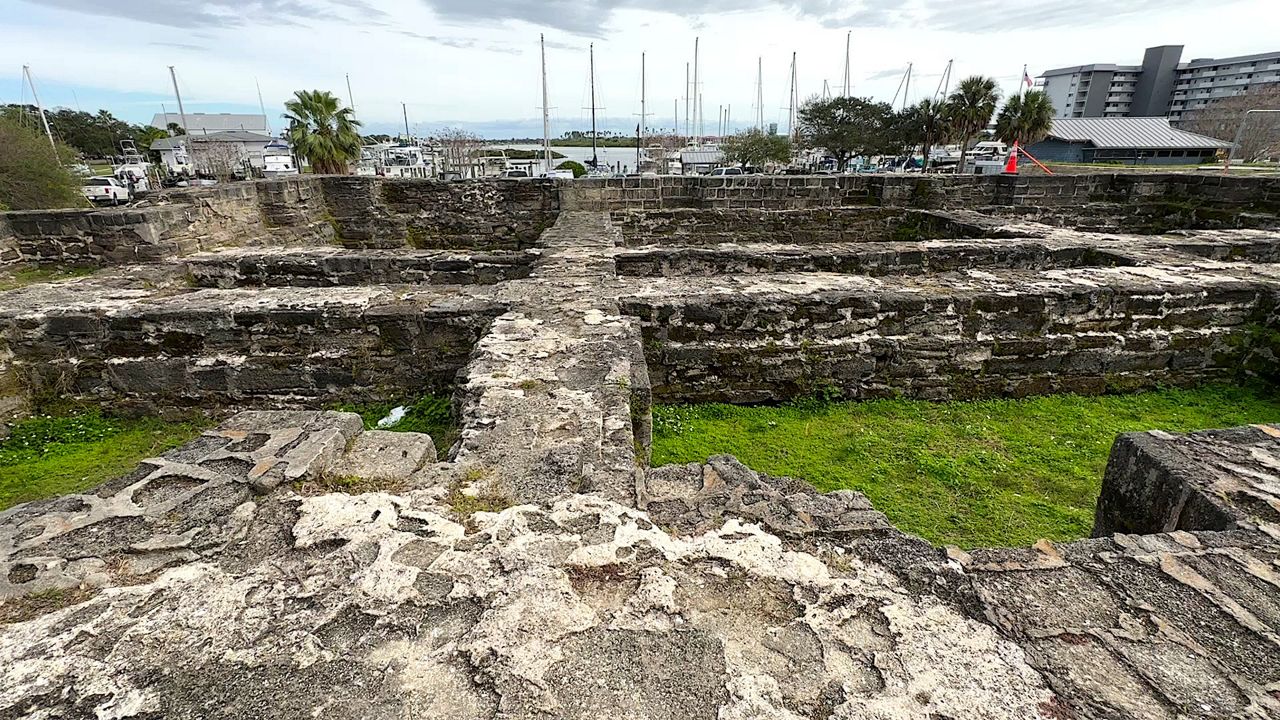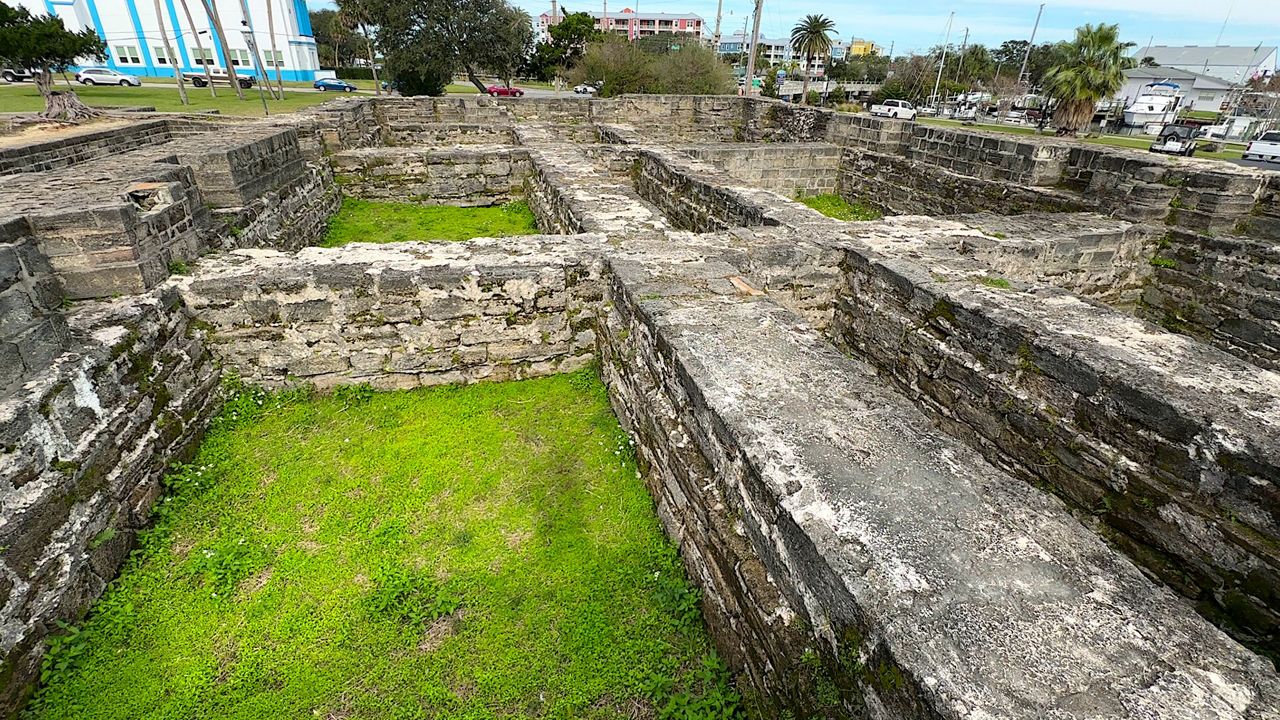NEW SMYRNA BEACH, Fla. — There is a spot in downtown New Smyrna Beach where remnants of ruins still puzzle archeologists, historians and anyone who visits the site.
What You Need To Know
- Old ruins in downtown New Smyrna Beach spark theories and intrigue
- Some believe they are the foundation to a house that was never finished
- Others believe it was the start of a fort that was later built in St. Augustine
- It is free to park and walk around the area and explore
Was it the foundation of a house being built by Dr. Andrew Turnbull, New Smyrna Beach’s founder? Or the beginning of a fort that was later built in St. Augustine?
These questions are as old as the coquina shells that make up the ruins — remaining a mystery to this day.
New Smyrna Museum of History Executive Director Greg Holbrook knows the story well.
“We know the first time it’s even mentioned by anyone is the early 1800s,” Holbrook said.
Holbrook said the structure was built around the 1770s and was part of the Smyrnea settlement established by Turnbull, a Scottish physician, in 1767.

Some believe that it was the foundation of a house that Turnbull wanted to give to a business partner, Sir William Duncan, but was never finished.
But records and even handwritten letters can’t confirm for sure that this was the case.
Holbrook said there have been a variety of theories examined and studied by experts and archeologists over the years, but no one can pinpoint with proof the genesis for the ruins.
Some believe that it was an incarceration site for settlers that were not working hard enough, while other speculate it pre-dates early settlers.
“And that it’s some sort of ancient purification site,” said Holbrook, but again, no solid evidence for that belief.
One of the most interesting theories is that it was the remnants and start of a Spanish fort. If proven true, it would rock Florida’s history quickly.
“The original theory from the pioneers was that this was originally going to be the fort in St. Augustine. They were sure the Spanish had selected this site and pulled north later on.”

Greg says a local historian was so sure about this, that he took the city of St. Augustine to court and made an impact, that to this day, is still used to determine how that area is defined.
“He sued the city of St. Augustine in court and tried and proved New Smyrna was older. The result of that suit ends up them changing the description of St. Augustine being the continually settled city in North America.”
But lack of evidence and a lack of a doorway has steered experts away from this theory.
“In the fort theory, why is there a fort with no entry or exit point and how would you get in and out of it?” Holbrook said.
Documentary filmmaker George Sibley produced a film in the 1990s ("Smyrnea Lost and Found") that included the ruins in the story.
“One of the mysteries of New Smyrna Beach. Because nobody knows what it’s really all about,” Sibley said.
He came to his own conclusions about the mound of composite stone material known as coquina that makes up the ruins.
“I think it was a residence of some sort,” Sibley said.
Either way, it’s one of New Smyrna’s biggest tourist attractions.
“It’s one of the most visited and photographed sites in our area,” Holbrook said.
Parts of the site are under construction. The city is currently inserting a concrete retaining wall behind the historic stone wall for enhanced stabilization and support.
In 2021, the city received a $900,000 State Historic Preservation Grant, with an $80,000 contribution from the city.
The ruins are located at 115 Julia St. in New Smyrna Beach. It is free to park and walk around the area and explore.



